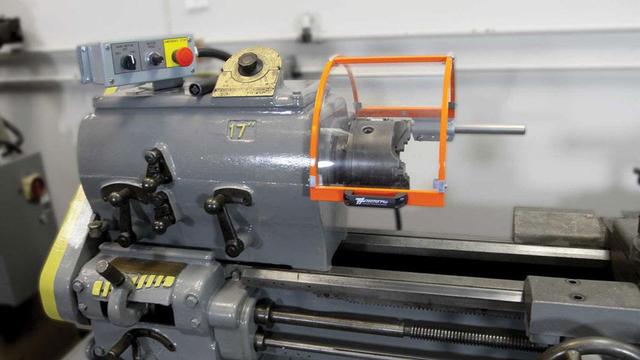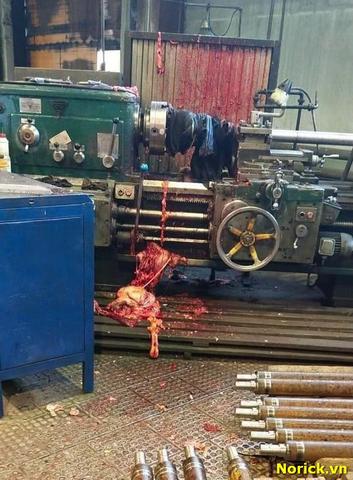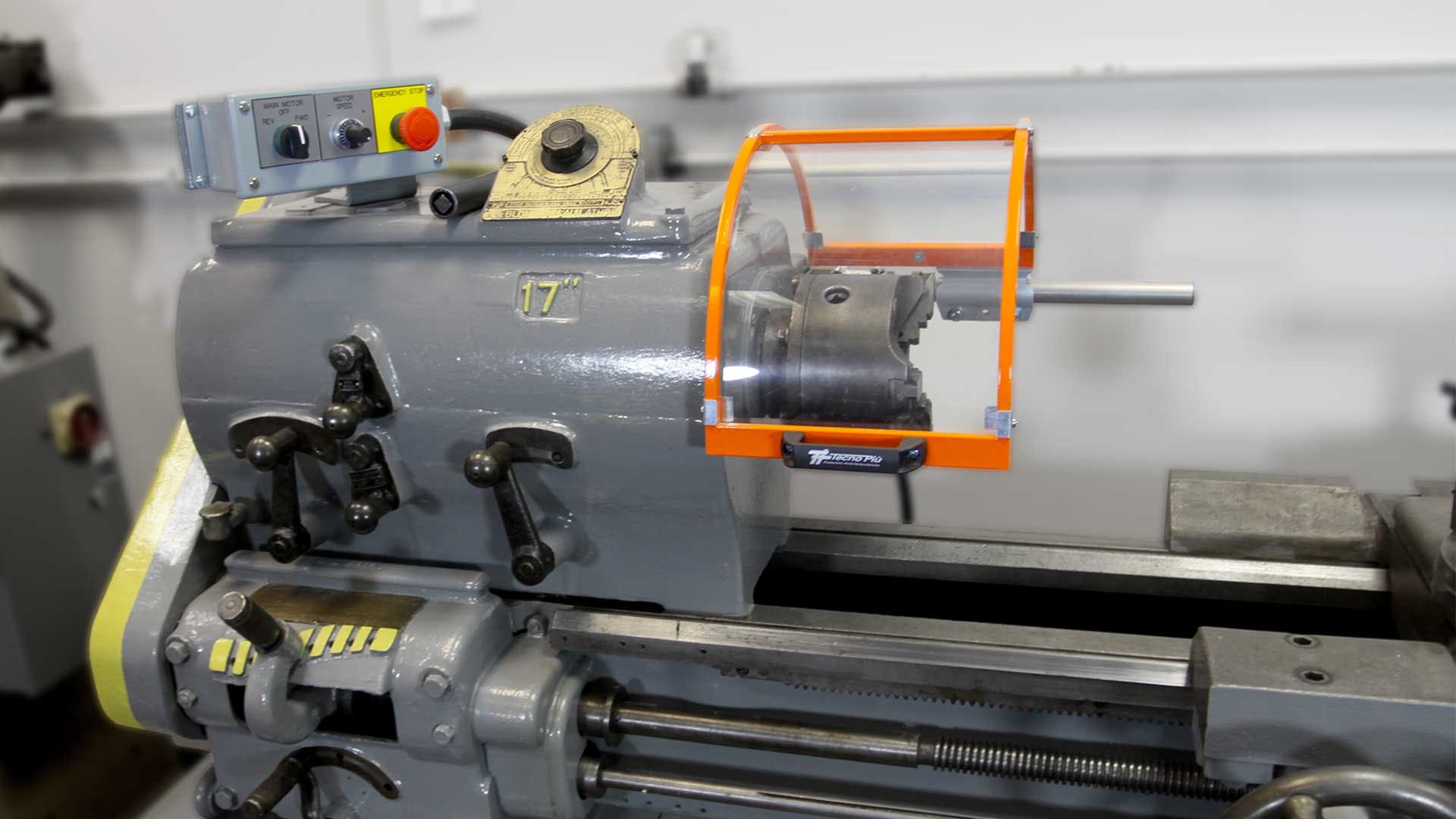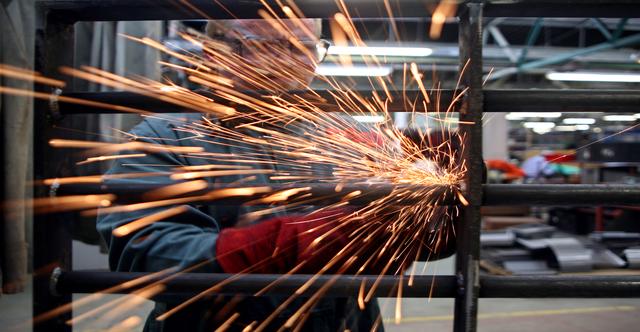Unforeseen Latte Machine Accident Sends Foam Flying, Leaving Workers in Shock
“Unforeseen Latte Machine Mishap: A Surprising Turn of Events Causing Chaos and Concern.”
Safety Precautions for Operating a Lathe Machine to Prevent Accidents

Operating a lathe machine can be potentially dangerous if proper safety precautions are not followed. It is crucial for metal workers to adhere to strict safety protocols in order to minimize the risk of accidents and injuries. Here are some key measures that should be taken when operating a lathe machine:
1. Wear Protective Gear
Prior to operating a lathe machine, it is essential to wear appropriate protective gear such as safety glasses, gloves, and steel-toed boots. These items provide physical protection against flying debris, sparks, and accidental contact with rotating parts.
2. Proper Training and Supervision
Metal workers must receive thorough training on the operation of lathe machines and safe work practices. They should be familiar with the machine’s controls, emergency shut-off procedures, and techniques for securing workpieces. Additionally, supervisors should provide ongoing oversight and ensure that employees comply with safety guidelines.
3. Secure Workpieces Correctly
Workpieces should always be securely clamped or mounted on the lathe machine before starting any operations. Incorrect or loose setup can cause workpieces to become dislodged during machining, leading to accidents. Use appropriate chucks or fixtures based on the size and shape of the workpiece.
4. Maintain Clear Workspace
Ensure that the area around the lathe machine is clean and free from clutter. This helps prevent tripping hazards and allows operators to move freely without obstruction. Also, keep all tools and accessories organized so they can be easily accessed when needed.
5. Regular Equipment Maintenance
A well-maintained lathe machine is less likely to malfunction or cause accidents. Follow the manufacturer’s recommendations for routine maintenance, including lubrication, cleaning, and inspection of critical components. Any signs of wear or damage should be addressed promptly to prevent further issues.
By following these safety precautions and remaining vigilant while operating a lathe machine, metal workers can significantly reduce the risk of accidents and protect their well-being.
Training Metal Workers to Identify and Avoid Dangerous Situations with Heavy Machinery
Training metal workers to identify and avoid dangerous situations with heavy machinery is crucial for ensuring their safety in the workplace. By developing a culture of awareness and providing comprehensive training, employers can empower their employees to recognize potential hazards and take appropriate actions to prevent accidents. Here are some key strategies for training metal workers:
1. Hazard Identification Training
Metal workers should receive thorough training on identifying common hazards associated with heavy machinery, such as pinch points, rotating parts, sharp edges, and electrical risks. They should learn how to conduct pre-operational inspections to identify any potential faults or issues that could lead to accidents.
2. Safe Work Practices
Teaching metal workers safe work practices specific to operating heavy machinery is essential. This includes proper body positioning, correct use of personal protective equipment (PPE), procedures for using emergency shut-offs, guidelines for lifting heavy objects safely, and techniques for securely fastening workpieces.
3. Emergency Preparedness
Metal workers must be trained in emergency preparedness protocols so that they can respond effectively in case of an accident or equipment failure. This includes knowledge of first aid procedures, evacuation plans, emergency contact numbers, and the location of fire extinguishers or other safety equipment in the workplace.
4. Ongoing Training and Refresher Courses
Training should not be a one-time event but an ongoing process. Employers should provide regular refresher courses, toolbox talks, and safety meetings to reinforce safe work habits and address any new risks or concerns that may arise. This helps to ensure that metal workers stay updated on the latest safety practices.
By investing in comprehensive training programs and creating a culture of safety awareness, employers can help metal workers develop the skills and knowledge necessary to identify and avoid dangerous situations with heavy machinery.
3. Understanding the Reason behind the Lack of Reaction Time in Lathe Machine Accident
In order to understand the reason behind the lack of reaction time in lathe machine accidents, it is important to analyze the factors that contribute to such incidents. One possible factor is inadequate training and knowledge of the machine’s operation and safety protocols. Workers who are not properly trained may not be aware of potential hazards or how to react quickly in case of an emergency.
Another factor could be complacency or lack of attention while operating the lathe machine. Repetitive tasks or a false sense of familiarity with the machine can lead to a reduced level of vigilance, causing workers to overlook potential risks and fail to react promptly when an accident occurs.
Furthermore, mechanical and technical issues with the lathe machine itself can also contribute to accidents and reduce reaction time. Faulty safety mechanisms, poor maintenance, or outdated equipment may hinder a worker’s ability to quickly respond to dangerous situations.
To address these issues and improve reaction time in lathe machine accidents, employers and supervisors should prioritize comprehensive training programs for all workers involved in machine operations. This should include regular updates on safety procedures, hazard identification, and emergency response protocols. Additionally, implementing regular inspections and maintenance schedules for all machinery can help ensure that equipment is functioning properly and reduce the risk of mechanical failures.
Factors Affecting Reaction Time:
1. Inadequate training and knowledge
2. Complacency or lack of attention
3. Mechanical or technical issues
Tips for Improving Reaction Time:
1. Provide comprehensive training programs for workers
2. Regularly update safety procedures and emergency response protocols
3. Implement regular inspections and maintenance schedules
4. Ensuring Worker Safety: Measures for Employers and Supervisors in Lathe Machine Operations

Ensuring worker safety is a crucial responsibility for employers and supervisors in lathe machine operations. By implementing specific measures, they can create a safe working environment and prevent accidents.
Firstly, it is essential to provide comprehensive training to workers on the safe operation of lathe machines. This should include instruction on proper machine setup, handling of materials, and adherence to safety protocols such as wearing personal protective equipment (PPE). Workers should also be trained on emergency procedures and how to respond effectively in case of an accident or injury.
Secondly, employers and supervisors must conduct regular risk assessments to identify potential hazards associated with lathe machine operations. This includes analyzing the workplace environment, identifying potential sources of injury, and implementing appropriate control measures. These may include installing safety guards, providing ergonomic workstations, or implementing safety policies that prioritize the well-being of workers.
Additionally, clear communication channels should be established between workers and management so that any safety concerns or near-miss incidents can be reported promptly. This allows for timely intervention and corrective measures to be implemented before accidents occur.
Measures for Ensuring Worker Safety:
1. Provide comprehensive training on machine operation and safety protocols
2. Conduct regular risk assessments
3. Install safety guards and provide ergonomic workstations
4. Establish clear communication channels for reporting safety concerns
5. International Regulations and Guidelines for Safe Operation of Industrial Machinery like Lathes
Safe operation of industrial machinery like lathes is regulated by various international standards and guidelines aimed at protecting workers’ health and ensuring their safety.
One key regulatory body is the International Organization for Standardization (ISO), which sets standards for different aspects of machinery operation including safety requirements. ISO 23125 specifically focuses on the safety requirements for metal-cutting turning machines such as lathes. Compliance with these standards helps ensure that lathes are designed, operated, and maintained in a manner that minimizes risks to workers.
In addition to ISO standards, other international organizations such as the Occupational Safety and Health Administration (OSHA) in the United States and the European Agency for Safety and Health at Work provide guidelines and regulations related to safe machinery operation. These guidelines cover a wide range of safety aspects including risk assessment, training requirements, emergency procedures, and maintenance practices.
It is important for employers and supervisors involved in lathe machine operations to familiarize themselves with these international regulations and guidelines. By adhering to these standards, they can create a safer working environment, reduce the risk of accidents, and protect the well-being of their workers.
Key International Regulatory Bodies:
1. International Organization for Standardization (ISO)
2. Occupational Safety and Health Administration (OSHA)
3. European Agency for Safety and Health at Work
Benefits of Compliance with International Standards:
1. Minimizes risks to workers
2. Creates a safer working environment
3. Reduces the likelihood of accidents
6. Common Causes of Lathe Machine Accidents and Prevention Strategies

6.1 Lack of Proper Training and Supervision
One common cause of lathe machine accidents is the lack of proper training and supervision. Operating a lathe machine requires specialized skills and knowledge in order to ensure safe operation. Without proper training, workers may not be aware of the potential dangers associated with operating the machine, leading to accidents.
To prevent such accidents, it is essential for employers to provide comprehensive training programs for all employees who will be operating the lathe machines. This should include instruction on the correct operation and maintenance procedures, as well as safety protocols to follow while using the machine. Additionally, regular supervision by experienced personnel can help identify any unsafe practices and rectify them immediately.
6.2 Failure to Follow Safety Guidelines
Another common cause of lathe machine accidents is the failure to follow safety guidelines. This can include disregarding safety procedures or bypassing safety features designed to protect operators from potential hazards. Such actions can greatly increase the risk of accidents occurring.
To minimize this risk, it is crucial for employers to establish clear and comprehensive safety guidelines that must be followed at all times when operating a lathe machine. These guidelines should cover areas such as wearing appropriate personal protective equipment (PPE), securing workpieces properly, and conducting regular inspections of the machine for any potential issues.
By emphasizing strict adherence to these safety guidelines and instilling a culture of safety within the workplace, employers can significantly reduce the occurrence of lathe machine accidents.
7. Reducing Risk in Metalworking Shops: Can Technology and Automation Help?

7.1 The Role of Technology in Enhancing Safety
In recent years, advancements in technology have played a significant role in enhancing safety in metalworking shops. Various technologies have been developed to mitigate risks associated with the operation of heavy machinery, including lathe machines.
One such example is the implementation of machine guarding systems that utilize sensors and interlocking mechanisms. These systems are designed to automatically shut down the machine or prevent it from operating if a worker enters a hazardous area. This helps minimize the risk of accidents caused by direct contact with moving parts.
Additionally, automation has also contributed to reducing risk in metalworking shops. Automated lathe machines can perform repetitive tasks with precision, eliminating the need for human operators to be in close proximity to dangerous rotating parts. This reduces the likelihood of accidents caused by human error or fatigue.
7.2 Benefits and Considerations of Technology Adoption
The adoption of technology and automation in metalworking shops offers numerous benefits in terms of safety. It allows for improved efficiency, reduced labor costs, and increased productivity. Furthermore, it minimizes the potential for human error and greatly enhances overall workplace safety.
However, there are some considerations that businesses must take into account when implementing technology solutions. These include initial investment costs, training requirements for employees who will be working with automated systems, and regular maintenance and updates to ensure continued functionality.
Ultimately, by embracing technological advancements and automation, metalworking shops can significantly reduce risks and create a safer working environment for their employees.
In conclusion, the latte machine accident serves as a reminder of the importance of following proper safety protocols in all environments. This incident highlights the potential risks associated with operating machinery and emphasizes the need for regular training and awareness. By prioritizing safety measures, we can prevent such accidents and ensure a secure working environment for everyone involved.
